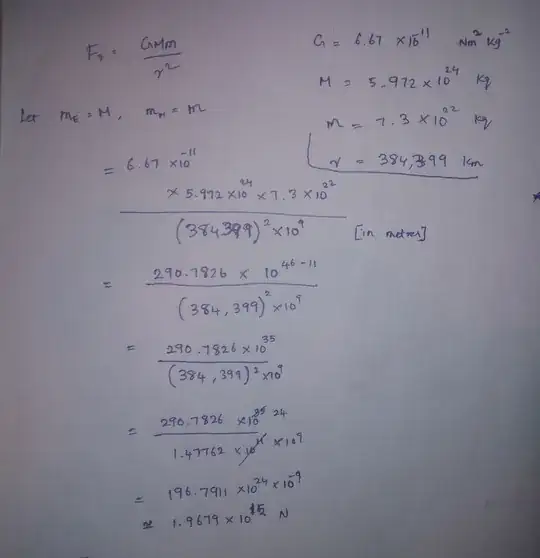This may be a repeated question.
Using Newton's law of gravitation F= GMm/r^2 , if I substitute the values of mass of earth and moon, distance between earth and moon, I get an value of around 1.9679×10^15 N (given below).
If I use force law, F=ma and divide F value by their masses, I get two acceleration values 2.684×10^-8 m/s² (divided by moon's mass, m), 3.29521×10^-10m/s² (divided by earth's mass, M).
- What did these two different acceleration values represent?
So, using this value, I can understand (roughly) that the acceleration of moon towards earth, which is very very small compared to object inside the atmosphere; so that moon stays in the orbit. I also read before that,moon's linear velocity balances this gravitation force to maintain its constant path- 'Newton's orbital cannon'. But, moon is external body right, not projected from earth. So, I assume its orbit might determined by external balancing (moon come inside earth's gravitational field, but does not enters further due to its linear velocity action) of these two forces. Is this correct? If so,
- can I take that above gravitational force (GMm/r^2) and centripetal force (mv^2 /r) equals each other for the constant revolution of moon in its orbit? If yes, can anyone provide the calculation.
